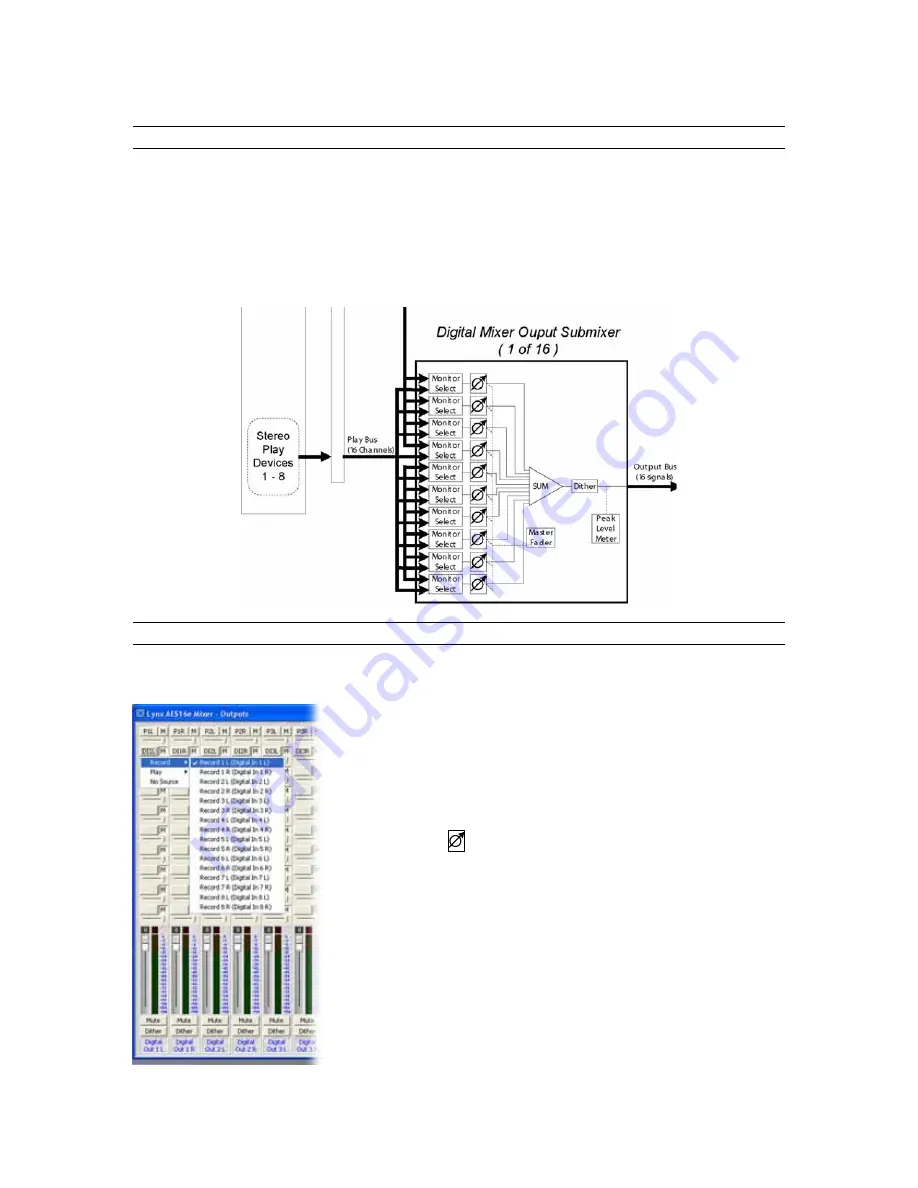
Using the AES16e
7.2.1 Monitoring Theory
Low latency monitoring can be enabled using the AES16
e
’s on-board digital mixer. This method avoids
delays caused be monitoring through application software. The digital mixer can be setup manually using
the Lynx Mixer application or within applications that support ASIO Direct Monitoring.
As discussed in Section 5.1.5 Digital Mixer Outputs, each output of the AES16
e
is derived from a ten-input
submixer. This submixer is shown below. The inputs to the submixers include both input signals and
playback signals. Enabling record monitoring is simply a matter of selecting a desired input signal for
mixing on a particular output.
7.2.2 Monitor Setup Using Lynx Mixer
The Outputs window of the Lynx Mixer provides access to the submixer connected to each physical output.
Controls on this window allow manual setup of monitoring.
The ten Monitor Select blocks shown in the submixer diagram correspond
to the ten Output Monitor Source buttons above the faders on each output
channel of the Lynx Mixer. A mouse click on one of these buttons
launches a menu of Record and Playback sources. Selecting a Record
source causes in input signal to be routed to the output.
Horizontal faders below these buttons correspond to the submixer input
volume controls,
, shown in the diagram above.
In this example, Digital In 1 is being selected as a monitor source for
Digital Out 1 Left. The “M” button next to the Output Monitor Source
button must be in the “out” position to unmute a monitor source. After the
source is selected, a corresponding four-letter pneumonic will appear on
the button.
AES16e User Manual
Page 56






























